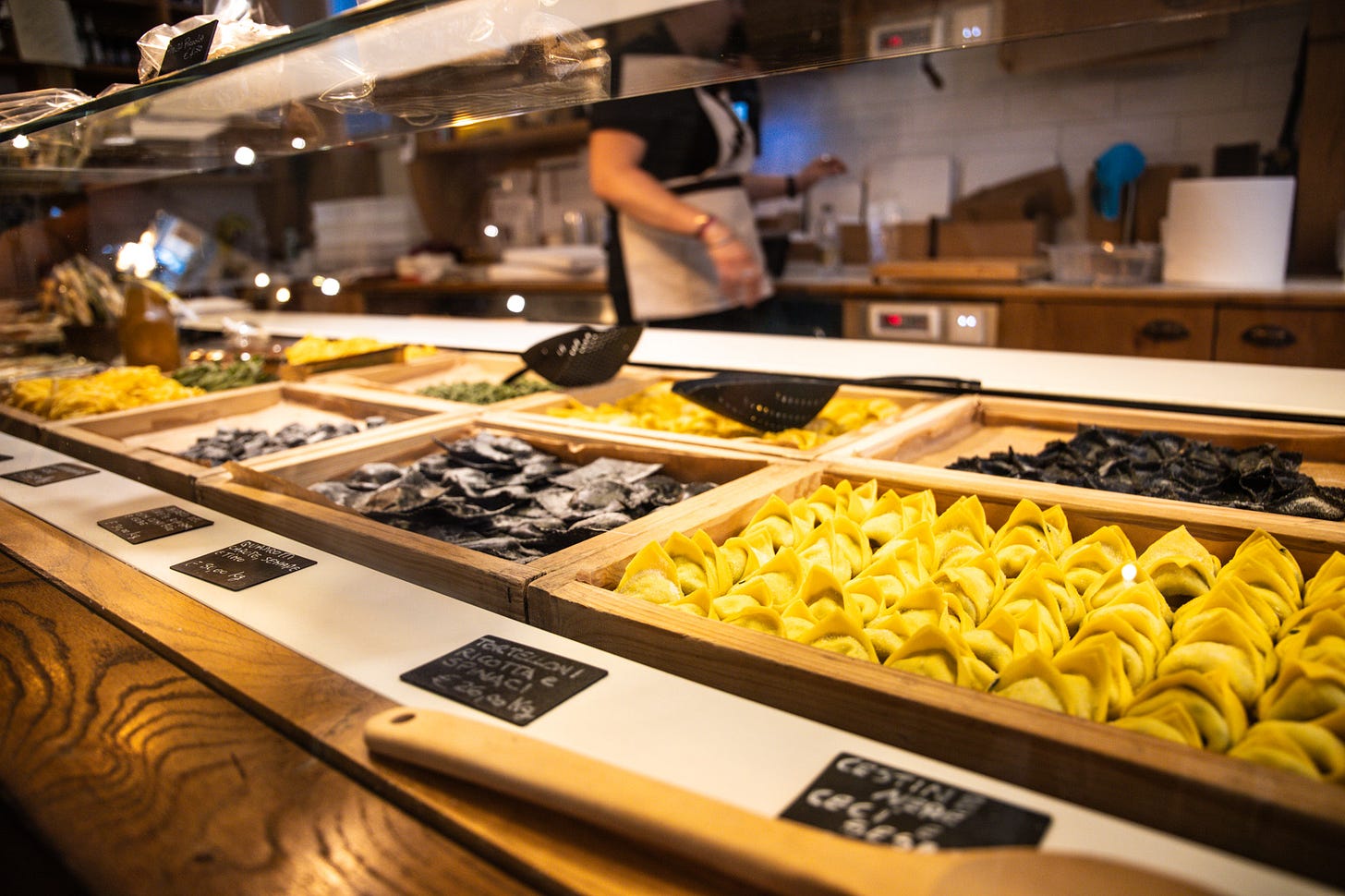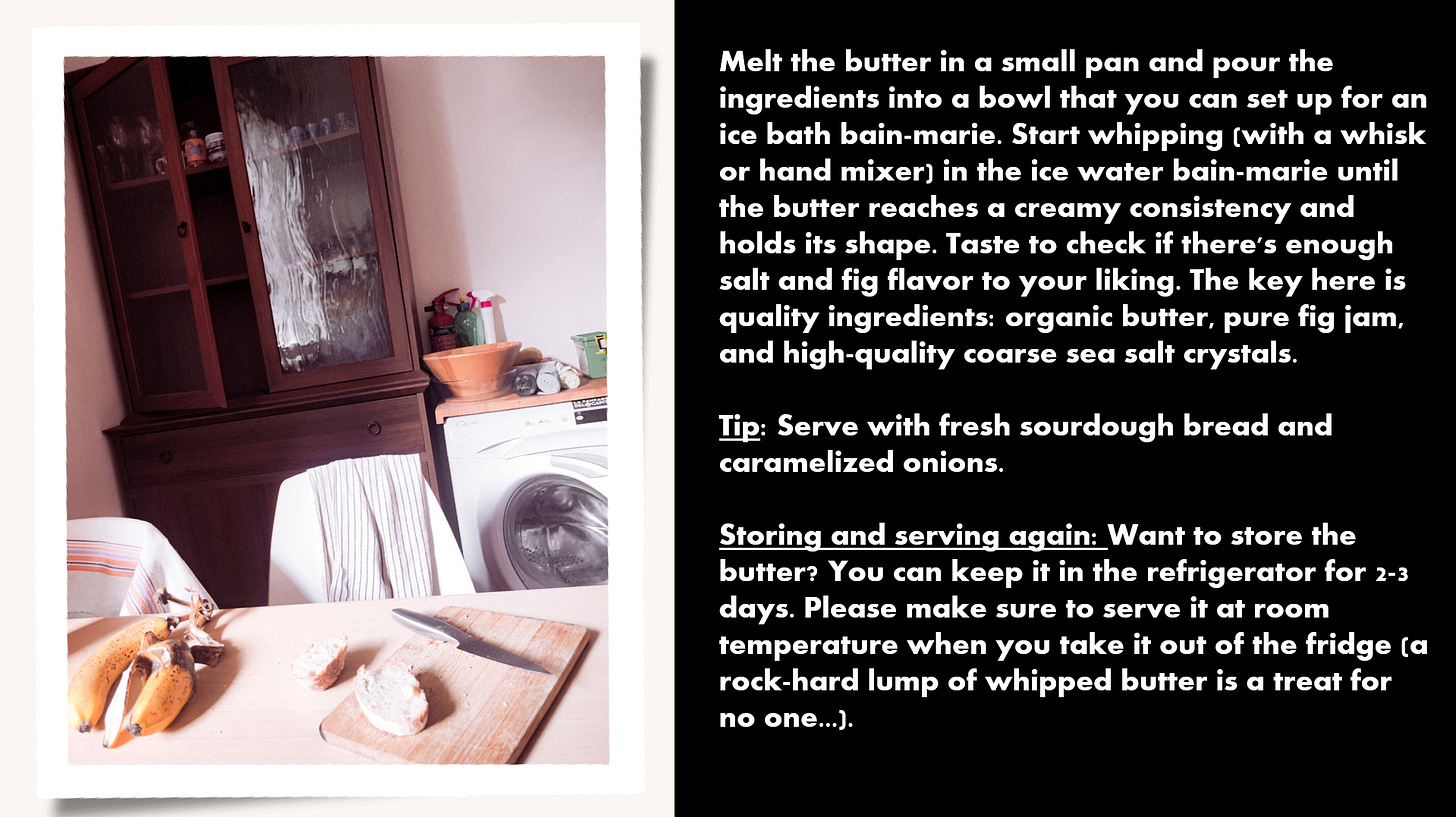Bologna
Let's talk about Italian food for a second. What makes Italian food good? For some it is the fat, used in abundance, as Samin Nosrat demonstrates in her Netflix series Fat, Salt, Acid and Heat. Some of you think of carbs. For me, it is the simplicity. A few good quality ingredients come a long way.
It is the taste of freshly made pasta with a bit of velvety olive oil and fresh basil that is just perfection. So naturally, my first holiday since appointed head chef at Schweibenalp is spend in Italy. Not just Italy, I am going to Bologna, because Bologna's nickname is 'Food capital of Italy' (Samin wasn't wrong about the fat either, a second nickname is 'The Fatty')
Bologna is known for its: Tortellini and tortellone (the bigger version of tortellini), tagliatelle, lasagna verde, pastelli, bolognese sauce (which the inhabitants call ragu) crescante, tigelle (small, whole wheat rolls), mortadella, torta di riso and balsamico. My holidays will be spend eating my way through Bologna and finding inspiration for my own to-be-developed cuisine.
What amazes me about this trip, is that even in a tiny town in a decrepit Osteria, there seems to be a nonna hidden in the kitchen, creating exquisite , fresh tortellini. The nonna that had both impeccable flavor and a nose for business is Rina and it’s her restaurant where my tour really begins.
Sfoglia Rina
This restaurant has been a household name in Bologna since 1963, when Rina opened a shop where you could buy freshly made pasta. I know that I hit the right spot, there is a queue. The restaurant is still family-owned, but the production is moved to a dedicated laboratory.
Inside, the ambiance resembles a canteen, simple and unpretentious, with tortellini and ravioli in a spectrum of colors available to take home. To order, you write your table number, name and order on a brown piece of paper and raise this, auction style. The bustling waiters will pick it up, attempt to pronounce your name and disappear again. I order tortellini in a vegetable broth (a classic, although the classic is of course with meat) and a black basket of chickpeas and sesame that piques my interest.
The broth taste like Grandma's vegetable soup, the tortellini in hearty and served with a simple bread, some cream and carrots. It is again the simplicity of Italian pasta that makes the food timeless and good.
The second dish is more experimental, the color palette is eye-catching, but lacks the simplicity of a traditional tortellini in broth. However, after a few bites, I find myself really enjoying this dish too. It is a mouthful of ravioli filled with chickpeas with a bit of a spicy after taste. By the third bite I am literally stuffed... Another thing Italians excel at: small portions that are perfectly filling.
Bologna exudes great allure, grand buildings, old palazzos and charming narrow streets showcasing beautiful architecture. It has one of the oldest universities in the world and the charme of a student city is noticeable. There are young people on bikes everywhere, a lot of arty looking types and bars on every street corner. The grand square has been transformed into a stage and a orchestra plays classical music. Today happens to be graduation day, and the square is brimming with people in linen suits and dresses. The city is alive with music, a celebration not just for those receiving their diplomas today.
I don't eat anything anymore before dinner time, the pasta has satisfied me completely, so I just spent the afternoon pleasantly wander door the streets of Bologna and enjoying its culture and history stories.
Cremaria Santa Stefano
My last stop on the first night is Cremeria Santo Stefano, a tiny ice cream shop tucked behind my apartment. If you peek behind the counter, you’ll see a large kitchen with two even larger ice cream machines, and you can easily imagine the ice cream being freshly made every morning. Naturally, there's a queue. But even here, where each scoop is crafted by hand, it costs only 3 euros for two flavors, and needless to say, it’s damn delicious. Creamy, nutty pistachio and an even creamier vanilla flavor. I savor my ice cream as slowly as possible, perched on a chair fit for a dwarf, as the queue grows longer and longer. On my slow walk back, I glance through the windows of the now-dark kitchen again. Stainless steel countertops, two gleaming ice cream machines, and a large freezer. I’m tempted to return tomorrow, just to watch the ice cream being made (and okay, to be honest, to try two more flavors...). I just might...
Ahimè
The restaurant is fully booked on Friday night, but I manage to secure a reservation for Saturday afternoon. For a brief moment, I consider booking the chef's menu but ultimately opt for à la carte. The interior is exactly my style—minimalistic, with grey and white tones, and it feels spacious despite only hosting 10 tables.
In the small, open kitchen, five chefs are at work. I’m relieved I didn’t choose the set menu, as it only includes two vegetarian options. The meal is accompanied by homemade sourdough bread and caramelized fig butter. My dish is a simple millet preparation with subtle hints of peanuts. The flavor is surprisingly mild, though not particularly memorable. However, the fig butter is definitely one for the ‘must-try’ list. I pair the meal with a local, fresh white wine that has a strong aftertaste of cherries and an almost orange hue.
Now, let’s talk about dessert: dessert can either make or break your dining experience. It’s the final impression, the last thing people remember... Too experimental? Not when it comes to dessert, please. Personally, I’m terrible at making desserts (which is why I signed up for a vegan patisserie course in November), but I can certainly appreciate a good one. Unfortunately, this dessert falls into the ‘too experimental’ category. I order peaches in a white wine vanilla cream. When I think of peaches, I imagine soft, juicy fruit. These, however, are rock solid. The cream is delicious, but the peaches have a bitter aftertaste—probably due to the wind (I’m guessing)—and not the pleasant kind of bitter. The dish has potential, but it’s just not for me.
The whole experience, from the staff who clearly aren’t keen on speaking English (they’re much more talkative when serving the courses to my Italian neighbors) to the overly experimental dessert, is unfortunately not to my taste. Perhaps their meat dishes are top-notch, but the vegetarian options clearly aren’t. It’s been my most expensive and most disappointing meal so far. But...
I never waste a dining experience like this—I’ve got a clear vision of what my future restaurant should look like, plus some inspiration for fig butter and a peach dessert that’s truly worthy ;) Now, let’s try this at home.
Whipped fig butter with a pinch of salt
Ever since I first tasted whipped, smoked butter, I wanted to make it myself. It turned out to be surprisingly simple, but somehow, I never got around to it. As with any recipe, it's a matter of patience and trust. The patience to keep whipping slowly and the trust that the butter will indeed thicken... That trust was rewarded.
Ingredients
Butter (organic and as fatty as possible)
4 ts figjam
2 ts sea salt








